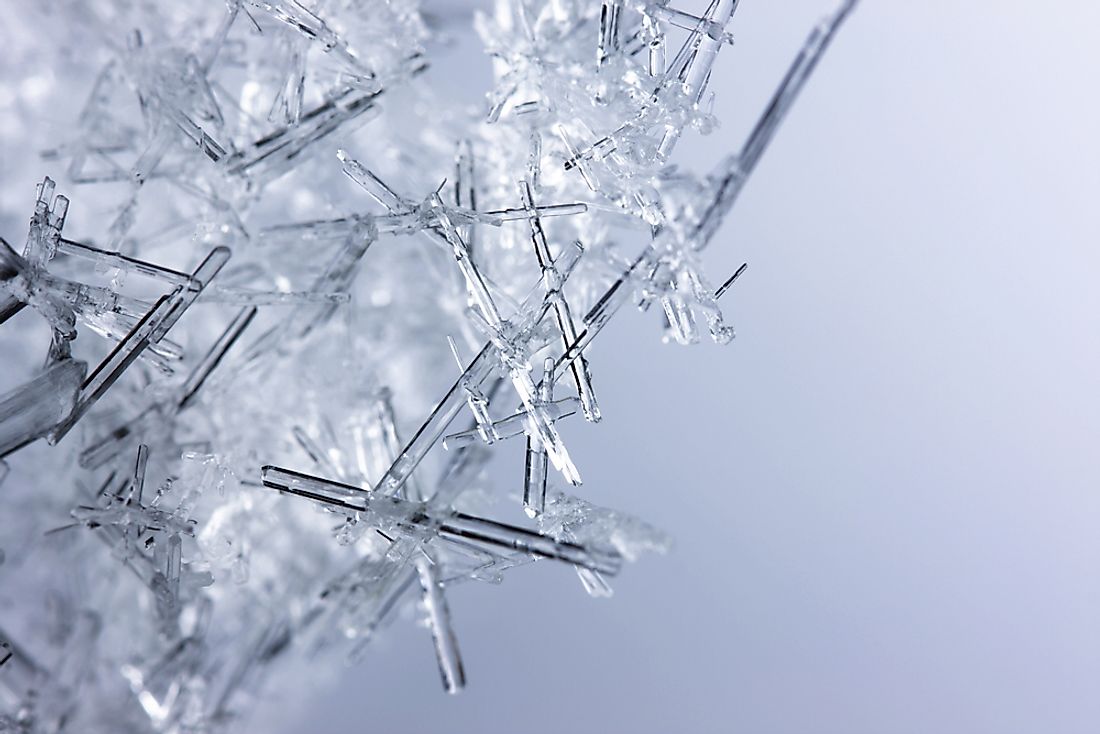How Many Types of Crystals Are There?

A crystal refers to any solid material whose constituent particles, such as atoms, ions, or molecules are arranged or organized in a repetitive pattern in all directions. Crystallography is the scientific study of crystals and how they are formed while crystallization or solidification is be defined as the formation of crystals.
The word “crystal” has Greek origins. The word is derived from the Greek word “krustallos” which means “ice” and “rock crystal.” Examples of crystals include diamonds and snowflakes.
Types of Crystals
There are two common methods and ways of categorizing crystals. One of the methods involves grouping them according to their structure while the other groups them according to their physical and chemical properties.
Grouping by Shape
Under this categorization, there are seven types of crystals. They are:
Isometric or Cubic
This type is not always a cube. Under this type, there are also octahedrons and dodecahedrons.
Hexagonal
This type of crystal is a six-sided prism. The cross-section of this type forms a hexagon.
Tetragonal
This crystal is almost similar to a cubic crystal but is lengthier on one axis than others leading to the formation of double pyramids and prisms.
Triclinic
This crystal is not symmetrical from one side to another thus forming different kinds of shapes.
Monoclinic
This type leads to the formation of prisms and double pyramids and looks like twisted tetragonal crystals.
Orthorhombic
This crystal is one whose cross-section is a prism or double pyramid with a rhombus for a base.
Trigonal
This type has a three-fold rotation axis unlike the six-side rotation axis of the hexagonal crystal.
Grouping by Properties
Under this grouping, there are four types of crystals. They are:
Ionic Crystals
This type of crystal is one whose constituent atoms are held together by ionic or charged bonds or simply by electrostatic forces. One atom that is negatively charged is pulled by a positively charged atom and so on. The pattern is dependent on the charges. Negative and positive ions alternate. This type of crystal is often hard and melt at high temperatures. An example of this type is table salt.
Molecular Crystals
These crystals are formed after molecules are held together by hydrogen bonds, which are weak. Since they are formed through the coming together of molecules, they are relatively soft and melt at low temperatures. An example of this type of crystal is sucrose.
Covalent Crystals
These crystals are those whose atoms are held together by covalent bonds. Covalent bonds are extremely tough and require a lot of effort to shatter. As a result, the resulting crystals share the qualities of being tough and melt at very high temperatures. An instance of such a crystal is a diamond.
Metallic Crystals
These crystals are made out of metal. As a result, they are good conductors of electricity and heat. These crystals’ melting points are purely dependent on the metal used in the crystal although they are typically heavy and have high melting points. An instance of such a crystal is a gold nugget.











